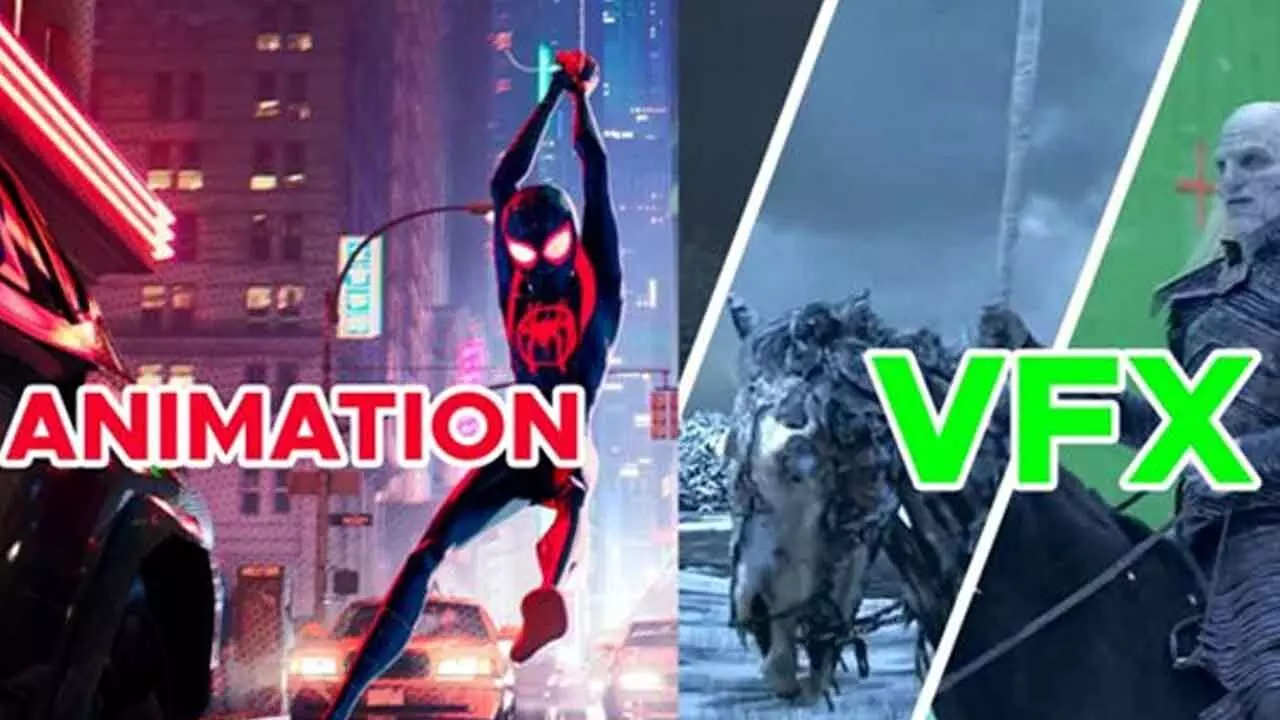Animation and VFX are revolutionizing the cinematic experience
India has emerged as a significant global player with its AVGC sector growing at a remarkable pace
image for illustrative purpose

The evolution of animation and visual effects (VFX) in films is a captivating story of how technology and creativity have transformed the way we consume a cinematic experience. What began as simple hand-drawn animations and elementary special effects has now become a sophisticated blend of art and science, enabling filmmakers to bring to life illusory worlds and characters that were once only imaginable. Today, the line between reality and fantasy in films is so finely crafted that audiences are often left wondering how much of what they see is real.
India has emerged as a significant player in this global industry, with its Animation, Visual Effects, Gaming, and Comics (AVGC) sector growing at an impressive pace. The country's rich pool of talented artists and technicians, combined with cost-effective solutions, has made India a preferred destination for international production houses. When movie-credits roll, it's increasingly common today to see a host of Indian and Asian names, highlighting the region's growing influence in creating the visual spectacles that captivate audiences worldwide.
India has always been a treasure house of stories. No wonder Indian filmmakers have delved into the country's rich heritage and culture and used the animation medium to tell stories rooted in the Indian ethos, which resonate with Indian audiences. In fact, creation of domestic IP content has been one of the cornerstones of development of the industry.
As a result, animation and VFX are no longer just tools of the trade—they are essential components that shape the very essence of contemporary filmmaking.
As technology continues to advance, coupled with creativity going beyond boundaries, the possibilities for visual storytelling seem limitless. Revolutionizing storytelling and AVGC landscape animation and VFX have revolutionized storytelling. Expanding the cinematic universe: From creating alien planets to resurrecting historical figures, these technologies have expanded the scope of storytelling, allowing filmmakers to explore uncharted territories
Enhancing realism: VFX has enabled filmmakers to create hyper-realistic environments and characters, blurring the lines between reality and fiction
Driving emotional impact: Animation, with its ability to exaggerate expressions and movements, can evoke powerful emotions in audiences, making characters more relatable and memorable
Democratizing filmmaking: With advancements in technology, animation and VFX tools have become more accessible, empowering independent filmmakers to create visually stunning films with limited budgets
Examples of cinematic magic-Avatar: The Way of Water (2022): The film made heavy use of artificial intelligence to create new visual effects. AI helped create realistic underwater scenes and characters, particularly the Na'vi, using advanced motion capture and face animation capabilities
Indiana Jones and the Dial of Destiny (2023): AI was utilized to de-age Harrison Ford and create flashback scenes with a younger version of his legendary role. To create a believable appearance, advanced facial recognition and deep-fake techniques were used. These examples illustrate how AI is not only enhancing the visual quality of films but also enabling new creative possibilities
The Lion King (2019): This live-action remake blended photorealistic CGI with live-action footage, resulting in a visually stunning and emotionally resonant film
Inside Out (2015): Pixar's masterpiece showcased the power of animation to explore complex human emotions in a visually captivating and relatable way.
Future of animation and VFX in India-Focus on industry-Relevant skills:
Animation education programs from leading training institutes in India like Arena Animation, MAAC and The Virtual Production Academy are increasingly prioritizing the development of skills that are directly applicable to industry needs. Students are trained in character animation, visual effects compositing, game design, and storytelling. Practical projects and collaborations with industry professionals provide invaluable hands-on experience.
Integration of emerging technologies: With the rapid advancement of technologies like extended reality (XR), virtual production (VP), virtual reality (VR), augmented reality (AR), and artificial intelligence (AI), animation education programs are adapting their curricula to include these advanced tools and technologies. This integration ensures that students are well-prepared for the evolving demands of the AVGC industry. Specialized courses for niche markets: The versatility of animation and VFX extends beyond entertainment. Specialized courses are now available in fields like medical animation, architectural visualization, and educational gaming. These programs cater to niche markets, equipping students with specialized skills for specific industries.
Global collaborations: To enhance their credibility and provide students with a global perspective, Indian animation & VFX institutions are forging partnerships with renowned universities and studios overseas. These collaborations expose students to international best practices and offer networking opportunities with peers in the global animation community.
The future of animation and VFX is incredibly promising. With rapid advancements in technology, we can expect even more immersive and realistic experiences. Generative AI, virtual reality (VR), and augmented reality (AR) are poised to revolutionize the way we consume content, and animation and VFX will play a crucial role in shaping these new mediums.
As the AVGC industry continues to grow, India is well-positioned to become a global leader in animation and VFX. With a focus on skill development and infrastructure, the country can harness its creative potential and contribute significantly to the global entertainment landscape.
(The author is Chief Executive Officer (I), Aptech Ltd. The views expressed are his personal views)

